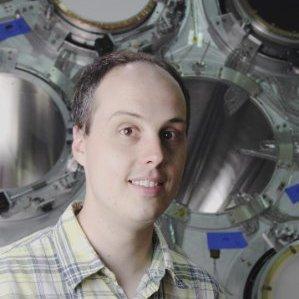Sensing the weather
A high-tech sensor and a high-altitude balloon may create an efficient new way to forecast weather.
Having quick access to weather data has become the norm for our society. We open an app on our phone, we ask Siri or we tune into the Weather Channel to get the latest forecast. But what many of us do not realize is that key data are most likely collected by a satellite launched years ago, using a collection method dating back to the 1970s.
A group of researchers from Arizona State University’s School of Electrical, Computer and Energy Engineering, School of Earth and Space Exploration and ASU/NewSpace looking to shake up this convention.
The CubeSounder project led by Sean Bryan, an associate research scientist in ECEE, is preparing a new sensor that will launch in a World View balloon sponsored by NASA in 2021.
Bryan and his colleagues had been working on a new sensor for radio astronomy when the idea came to them to apply this device to imaging of the weather.
“The technique is not new,” says Bryan. “It’s similar to what is currently on satellites orbiting our planet. But the new sensor, which is much smaller and runs on less power, makes it far superior to its predecessors.”
As the team began collaborating and growing their idea, they decided not to take the expected route of implementation on a satellite and opted instead to focus on launching their sensor in a high altitude balloon. Keeping the equipment in the stratosphere allows for easier access for updates or replacements if a malfunction is detected.
In the early part of 2020, Bryan and his colleagues ran with the idea and applied for NASA’s Technology Advancement Utilizing Suborbital Flight Opportunities “Tech Flights” program. In mid-October, the team was selected as part of the 2020 cohort.
Partnering with World View, a company leading the way in the emerging stratospheric economy, the CubeSounder project will consist of two flights and use the follow-fly-fix-fly approach.
“We’re excited to partner with ASU on taking their CubeSounder payload into the Stratosphere”, said Ryan M Hartman, President and CEO at World View. “Beyond these initial flights, World View is excited to use the CubeSounder as a baseline weather payload for collecting and disseminating weather information from our World View Orbits”.
The first flight in 2021 will allow the team to collect data and see where improvements can be made. The second flight, scheduled for 2022, will deploy the improved version of the sensor. If successful, the new sensor could initiate the commercialization of this high-impact source of critical weather data.
“We could really improve things with our sensor that is 10 times better in size, weight, power and cost,” Bryan says. “Our country and the world would benefit from this capability and its benefits at a lower cost.”
The team
- Sean Bryan | Center for Wireless Information Systems and Computational Architectures
- Daniel Bliss | Center for Wireless Information Systems and Computational Architectures
- Christopher Groppi | School of Earth and Space Exploration
- Phillip Mauskopf | School of Earth and Space Exploration
- Scott Smas | ASU/Newspace

Early prototype of the sensor. Image courtesy of Sean Bryan.

Zoom shot of the key new sensor technology. Photo courtesy of Sean Bryan.
Spotlight on Sean Bryan
Project lead – CubeSounder
Sean Bryan began his ASU career in 2014 as a postdoctoral researcher in the School of Earth and Space Exploration. In 2017, he was appointed an associate research scientist for ECEE, in the Center for Wireless Information Systems and Computational Architecture, or WISCA.
Bryan’s past and current projects made him a perfect fit for the lead role with CubeSounder. While pursuing his PhD at Case Western Reserve University, Bryan worked as a hardware subsystem lead with NASA and the Columbia Scientific Balloon Facility on Spider, a radio astronomy balloon. More recently, he authored satellite flight software for a project managed by NASA’s Jet Propulsion Laboratory.
Bryan is an integral part of the WISCA team. Not only is he the current project lead for CubeSounder, but he is also the survey planning lead on the SPHEREx NASA satellite mission, collaborator on the Kestrel, TolTEC, CMB-S4, and Simons Observatory teams and had leading roles in proposal development for grants with NASA, NSF, Keck Foundation, Office of Naval Research, the National Reconnaissance Office, NOAA and DARPA.
Bryan received his PhD in physics from Case Western Reserve University and his BS in physics from the University of Minnesota.

Top image: Launching of a World View Stratollite into the stratosphere. Image courtesy of World View.